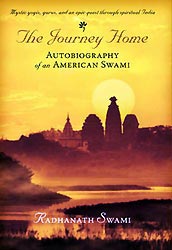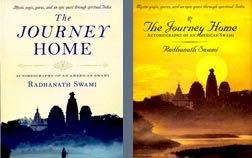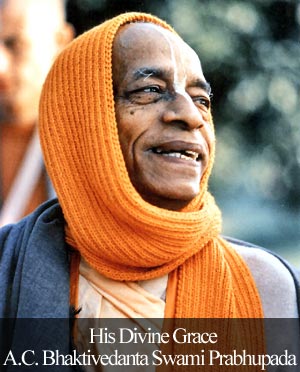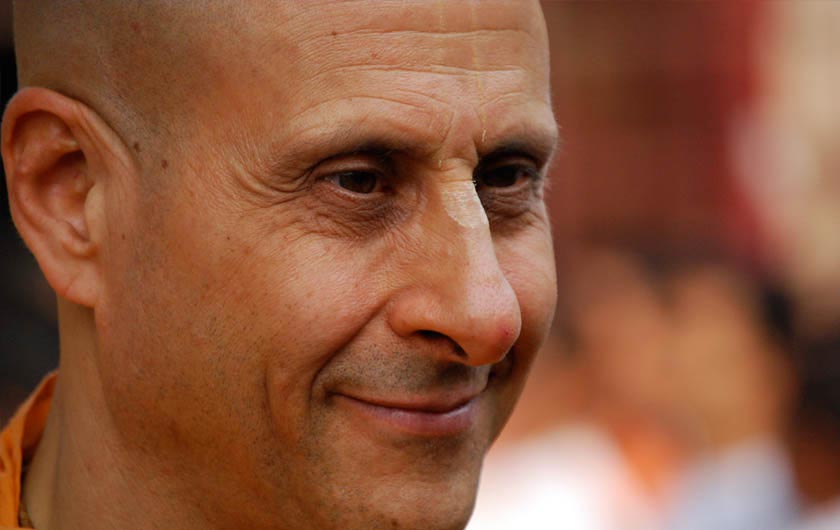
While Richard was travelling on a train winding through the Indian plains, he witnessed a teenager being slandered and beaten by his employer on the platform. The teenager neither raised a finger nor said a word and was quickly dragged away. Richard enquired about this ugly incident from a nearby college student who replied that because the boy was born in a lower caste, he’s like a slave and will work slave labour for life. Richard learnt that the government was fighting against these injustices and most educated, cultured, or socially minded people were battling against it as well. But it was still quite deeply ingrained in the minds of many.
Richard came to know that this caste system was actually a gross perversion of an ancient scriptural teaching, the vedic varnashram, which teaches that, just as the human body has a head, arms, belly, and legs, and each limb is meant to perform its function for the benefit of the whole body, in the social body, one is taught to accept responsibilities for the social and spiritual benefit of oneself as well as everyone in society according to one’s natural inclinations and skills. The Vedic varnashram was meant to encourage, empower, and unify everyone. However this concoction of caste by birth and exploitation of the lower castes has corrupted a beautiful system.
Although Richard reflected on the sad parallel to this in the suppression of racial and religious minorities in America and Europe, he was also heartened to know that nothing in the true Hindu philosophy supported suppression of human beings on the basis of one’s race, caste, sex, or birth, and that among saintly people he had not witnessed any of this kind of prejudice.
One of the first lessons I learnt in my spiritual life is that although there is division of people in the society based on occupation, all are equal and deserve the same respect and love. A balanced and healthy body has the brain, arms, belly and legs working in good condition. Similarly the symptom of a healthy social body is the peaceful coexistence of teachers and intelligentsia, the administrators, the business class and the laborers. The brahmanas in Vedic society refers to the ‘brain’ of society, i.e. they provide the intellectual capital and spiritual and moral direction. The Kshatriyas, or the administrators are compared to the arms and they have a crucial role to protect the citizens. The Vaishyas, or business class are compared to the belly, and the worker class or shudras are the legs which support the other three orders. This division is natural in any society as different people adopt different occupations based on interest and inclinations. To say the arms are needed but the legs are unimportant for the body is foolish. Likewise to condemn a certain occupational class within the same society is disastrous. Needless to say all the orders have to work with dignity of labor, mutual respect and in harmony with each other.
Considering the malady of discrimination based on birth, Radhanath Swami quotes from the Bhagavad Gita, the most authorized book for the Hindus, that a person’s position in the society is based on his character and not on birth. Thus a person, although born in an apparently higher caste, has to qualify himself. Similarly if a person born into a ‘lower’ caste displays qualities of a person of the ‘higher’ order, he shouldn’t be discouraged. We cannot assume that a child of doctor parents automatically qualifies himself/herself to be a doctor on the basis of birth in one such family. Similarly no one can claim to be a higher class simply because his parents and predecessors are qualified.
To illustrate this point, Radhanath Swami narrates a story from the Chandogya Upanishad, a holy scripture of the Hindus. Satyakama, a young five year old boy approached a spiritual master for enlightenment. The guru enquired about his father and the boy said he was unaware of his father’s identity. He was then told to go and ask his mother. He soon returned and candidly confessed that his mother had known many men, and is herself unsure about his father’s identity. The spiritual master, being pleased with this honesty, declared to the boy, “You are a real brahmana”.
Radhanath Swami implores men and women to lead a life of truth and dignity, and not be bogged down by superficial, bodily identifications.
 Table of Contents
Table of Contents

 Founder-acharya of the International Society For Krishna Consciousness (ISKCON)
Founder-acharya of the International Society For Krishna Consciousness (ISKCON) “Go to India” a sweet but commanding voice; spoke up in the heart of young Richard (later Radhanath Swami) who was immersed in meditation, his search for meaning in life has brought him to the Isle of Crete. Today he was ordered to go to India. Born and raised in the middle class suburbs of Chicago, Radhanath swami grew up in the 1950’s and 60’s era when popular musicians protested war, prejudice and social injustice. Radhanath swami would listen to these songs again and again, but their lyrics referring to God stirred his soul. Peter, Paul and Mary- the folk trio from Greenswich village sang in their debut album
“Early in the morning, about the break of day
I ask the Lord, to help me find my way”
This simple prayer was to guide Radhanath swami in the coming years of his life........
“Go to India” a sweet but commanding voice; spoke up in the heart of young Richard (later Radhanath Swami) who was immersed in meditation, his search for meaning in life has brought him to the Isle of Crete. Today he was ordered to go to India. Born and raised in the middle class suburbs of Chicago, Radhanath swami grew up in the 1950’s and 60’s era when popular musicians protested war, prejudice and social injustice. Radhanath swami would listen to these songs again and again, but their lyrics referring to God stirred his soul. Peter, Paul and Mary- the folk trio from Greenswich village sang in their debut album
“Early in the morning, about the break of day
I ask the Lord, to help me find my way”
This simple prayer was to guide Radhanath swami in the coming years of his life........
Radhanath Swami has nicely explained who the real Brahman is. We honour or dishonour a person based on his birth. However this story clearly tell us that this is wrong.
View CommentRadhananath Swami tells us the real meaning and purpose of the Varnashram system and how people have misused it. Something to ponder upon.
View CommentMaharaj has an amazing sense of taking a learning from every incident he comes across.
View CommentHari bol, Dandavat Maharaj
View Commentvarnashram system meant to unify people and not to divide is an exceellnet quote
View CommentAs Radhanath Swami points out, qualities of a person, and not his/her birth, determine his/her the varna (caste). Any other interpretation of the caste system is flawed. To understand a concept created by GOD Himself, let us refer to what He says about it.
View CommentWe should also strive for and not descriminate people based on caste or religion while preaching Krishna consciousness to them.
View Commentvery nice article
View CommentRadhanath Swami very precisely describes the perverted caste system in modern times “The Vedic varnashram was meant to encourage, empower, and unify everyone. However this concoction of caste by birth and exploitation of the lower castes has corrupted a beautiful system.”
Thank you very much Radhanath Swami Maharaj !
View CommentHare Krishna !
Thank you for elaborating about the vedic caste system.
View Comment